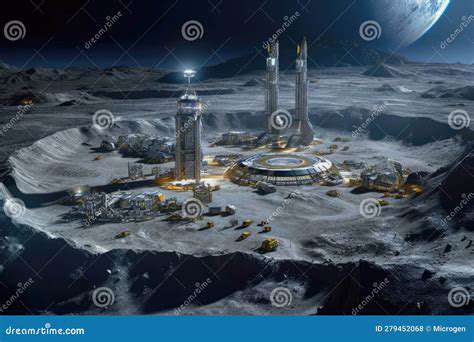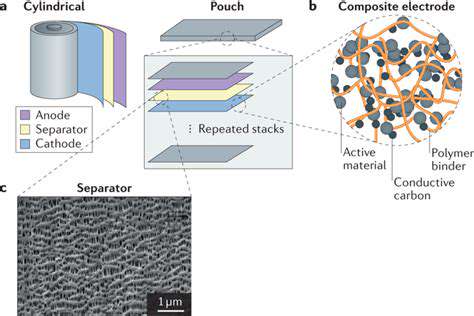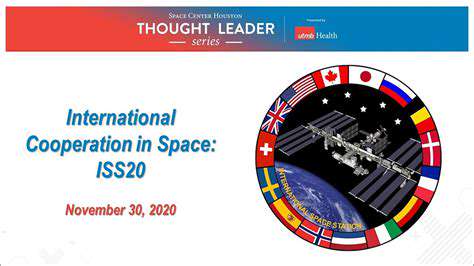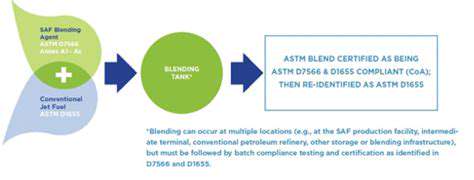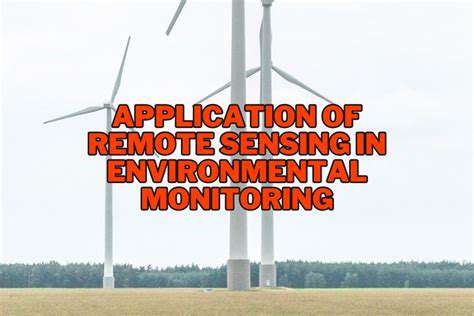Solar Flares and Their Impact
Solar flares represent one of the most dramatic manifestations of our star's activity. These explosive events originate from the Sun's turbulent surface, where twisted magnetic fields suddenly release pent-up energy. The resulting bursts of radiation span the electromagnetic spectrum, from high-energy X-rays to intense ultraviolet light. When directed toward Earth, this radiation barrage can trigger cascading effects in our planet's protective magnetosphere. For satellites orbiting above our atmosphere, these events pose significant operational challenges that demand constant vigilance.
The scale of solar flares varies tremendously, with the most powerful events capable of disrupting technological systems across continents. The accompanying solar wind - a stream of charged particles racing through space at nearly a million miles per hour - can induce powerful electrical currents in spacecraft components. These unexpected surges have caused numerous satellite anomalies throughout the space age, from temporary glitches to complete system failures.
Coronal Mass Ejections: A Powerful Solar Storm
While solar flares capture attention with their brilliant flashes, coronal mass ejections (CMEs) often pose greater dangers to space assets. These colossal eruptions hurl billions of tons of superheated plasma into interplanetary space, carrying with them embedded magnetic fields from the Sun's corona. When these magnetized plasma clouds intersect Earth's orbit, they can compress our planet's magnetic field to alarming degrees.
The real danger lies in the unpredictable nature of these solar storms. Their trajectories can change unexpectedly, and their internal structures remain difficult to model accurately. The complex magnetic fields within CMEs can induce powerful electrical currents in satellite components, while the accompanying particle radiation can degrade solar panels and sensitive electronics over time. Spacecraft operators must constantly monitor space weather forecasts to anticipate these invisible threats.
Mitigation Strategies for Space-Based Assets
Modern satellite design incorporates multiple layers of protection against solar storms. Engineers now use special radiation-hardened electronics that can withstand higher doses of energetic particles. Critical systems often feature redundant components that can take over if primary systems fail. Some satellites even include safe modes that automatically activate during severe space weather events, powering down non-essential systems until the storm passes.
Operational strategies play an equally important role in protecting orbital assets. Many satellite operators maintain flexible orbit adjustment capabilities, allowing them to slightly modify a spacecraft's position to minimize radiation exposure. Ground teams routinely analyze space weather forecasts to schedule sensitive operations during periods of solar calm. These combined technological and operational approaches have significantly improved satellite survivability in the hostile space environment.
Protecting Satellites from the Solar Storm's Fury: Mitigation Strategies
Predictive Modeling and Early Warning Systems
The space weather forecasting community has made remarkable progress in recent years. Modern prediction models combine data from multiple solar observatories with advanced computational techniques to anticipate solar eruptions. These sophisticated systems can now provide several days' warning of potential Earth-directed CMEs, giving satellite operators valuable preparation time.
Early warning networks have become increasingly sophisticated, with alerts now tailored to specific satellite constellations and orbital regimes. The most advanced systems can predict not just when a storm will arrive, but also its likely intensity and duration. This precision allows operators to make informed decisions about whether to postpone maneuvers, activate protective measures, or temporarily reduce operations. Such targeted warnings have prevented countless satellite anomalies and extended mission lifetimes significantly.
Shielding and Hardening Techniques
Spacecraft designers employ multiple strategies to protect vital components from solar radiation. Critical electronics often reside within specially designed vaults lined with radiation-absorbing materials. Solar panels incorporate protective cover glass to minimize degradation from particle impacts. Some satellites even feature self-healing materials that can repair minor radiation damage automatically.
The latest generation of satellites employs intelligent hardening systems that adapt to changing space weather conditions. These can automatically reroute power away from vulnerable circuits when radiation levels spike, or switch to backup systems if primary components show signs of degradation. Such adaptive protection represents a major leap forward in spacecraft survivability.
Operational Procedures and Contingency Planning
Satellite operators maintain detailed response plans for various space weather scenarios. These protocols outline specific actions to take based on storm severity, from temporary system shutdowns to orbital adjustments. Regular drills ensure ground teams can implement these measures quickly when needed.
Perhaps most importantly, the space community has developed robust communication networks for sharing space weather information. Real-time data exchanges between satellite operators, space agencies, and research institutions help coordinate responses across multiple spacecraft and orbital regimes. This collaborative approach has proven invaluable during major space weather events.
Globally, we continue to grapple with the paradox of food abundance alongside food insecurity. Recent analyses show that nearly one-third of all food produced never reaches consumers, lost to inefficiencies throughout the supply chain. This waste represents not just a moral failing but an environmental catastrophe, as decomposing organic matter in landfills generates methane - a greenhouse gas far more potent than carbon dioxide.
The Economic Impact of Satellite Failures due to Space Weather
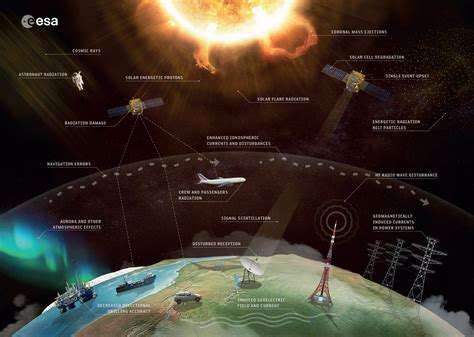
The Rise of Satellite Communication
The satellite industry has undergone revolutionary changes in the past decade, driven by technological advancements and growing global connectivity demands. Modern constellations now provide services ranging from broadband internet to precision navigation, creating an intricate web of space-based infrastructure. The economic value of these systems has grown exponentially, making their protection from space weather increasingly critical.
Global Connectivity and Reduced Latency
Next-generation satellite networks promise to eliminate communication dead zones worldwide. Their low Earth orbit configurations enable data transmission speeds that rival terrestrial fiber-optic networks. For financial markets, emergency services, and global enterprises, these low-latency connections have become indispensable infrastructure.
Enhanced Navigation and Positioning
Satellite navigation systems now underpin countless economic activities. From agricultural automation to maritime shipping, precise positioning data has become a fundamental business requirement. The economic value created by these systems likely exceeds their development costs many times over.
Impact on Telecommunications
The satellite telecom sector continues to disrupt traditional service models. By offering direct-to-device connectivity, new entrants are challenging conventional mobile network operators. This competition drives innovation while expanding access to underserved populations.
Data Transmission and Storage
Satellite-based data services now support everything from scientific research to entertainment streaming. Their ability to move vast datasets across continents makes them crucial infrastructure for our digital economy. As data demands grow exponentially, satellite networks will play an increasingly vital role.
Economic Growth and Job Creation
The space sector has become a significant economic engine, supporting high-tech jobs across multiple industries. From component manufacturing to data analysis, the satellite ecosystem creates employment opportunities at all skill levels. This growth shows no signs of slowing as space-based services expand.
Environmental Considerations and Sustainability
While delivering economic benefits, the space industry faces increasing scrutiny regarding its environmental impact. Sustainable satellite design and responsible end-of-life practices are becoming competitive advantages in the sector. The long-term viability of space activities depends on addressing these concerns effectively.
Future Directions in Space Weather Protection for Satellites
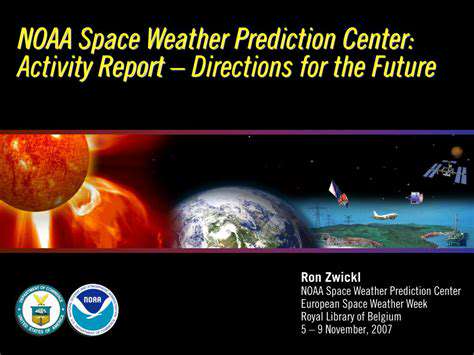
Predicting Space Weather Events with Enhanced Accuracy
The next generation of space weather prediction will likely combine artificial intelligence with expanded observational networks. Machine learning algorithms are demonstrating remarkable skill at identifying precursor signals of solar eruptions. By analyzing patterns across multiple solar cycles, these systems may eventually provide forecasts with unprecedented lead times and accuracy.
Improving Space Weather Monitoring and Detection Capabilities
New sensor technologies promise to revolutionize our understanding of solar phenomena. Miniaturized instruments deployed across cislunar space could provide comprehensive monitoring of the solar wind. These distributed networks would offer real-time tracking of space weather events from multiple vantage points.
Strengthening Resilience to Space Weather Impacts
Future spacecraft designs may incorporate self-protecting systems that automatically respond to space weather threats. Advanced materials with radiation-shielding properties could dramatically reduce vulnerability to solar storms. Such innovations would represent a paradigm shift in spacecraft survivability.
